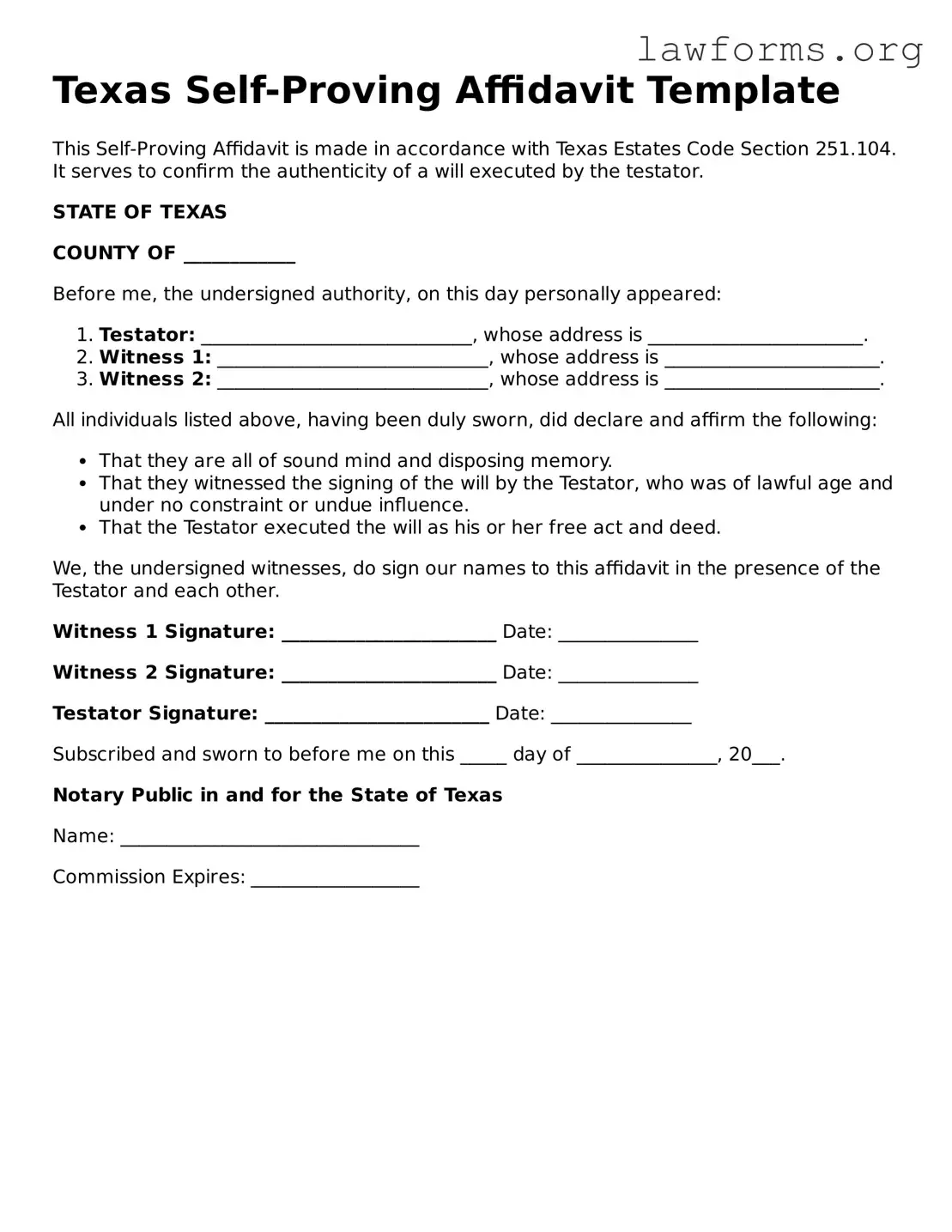Texas Self-Proving Affidavit Template
This Self-Proving Affidavit is made in accordance with Texas Estates Code Section 251.104. It serves to confirm the authenticity of a will executed by the testator.
STATE OF TEXAS
COUNTY OF ____________
Before me, the undersigned authority, on this day personally appeared:
- Testator: _____________________________, whose address is _______________________.
- Witness 1: _____________________________, whose address is _______________________.
- Witness 2: _____________________________, whose address is _______________________.
All individuals listed above, having been duly sworn, did declare and affirm the following:
- That they are all of sound mind and disposing memory.
- That they witnessed the signing of the will by the Testator, who was of lawful age and under no constraint or undue influence.
- That the Testator executed the will as his or her free act and deed.
We, the undersigned witnesses, do sign our names to this affidavit in the presence of the Testator and each other.
Witness 1 Signature: _______________________ Date: _______________
Witness 2 Signature: _______________________ Date: _______________
Testator Signature: ________________________ Date: _______________
Subscribed and sworn to before me on this _____ day of _______________, 20___.
Notary Public in and for the State of Texas
Name: ________________________________
Commission Expires: __________________
